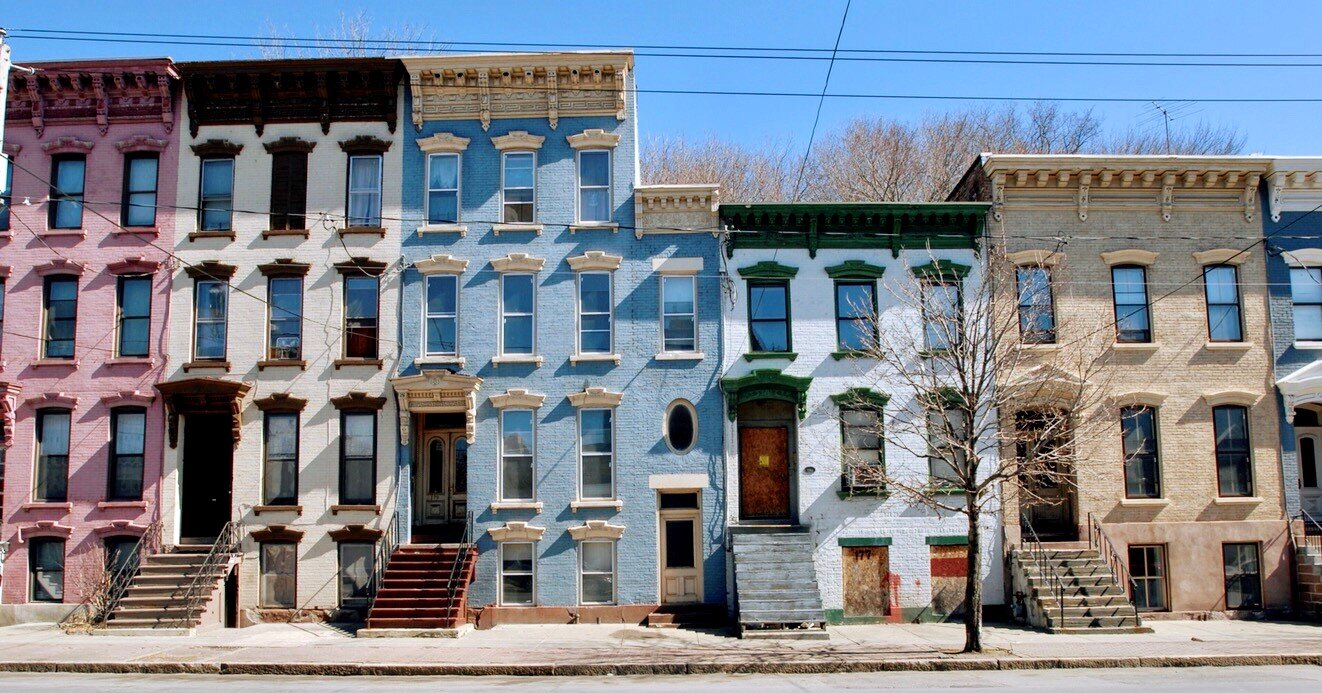Voices of Preservation: When We Demolish Our Old Buildings, We Weaken Our City
This editorial originally appeared in the Albany Times-Union on August 10, 2020 and has been reproduced here with permission of the author. Marilyn Kaplan is the Principal of Preservation Architecture in Albany.
A block of row houses in Albany, NY
In June, a 19th-century building at 42 Lexington Ave. in Albany was demolished, along with another building at 38 Lexington. The Times Union headlined a photo of it, "Neighborhood upgrade."
I take exception. The loss of any building and its potential to be rehabilitated is in fact a "neighborhood downgrade," the loss of an opportunity to provide needed housing and strengthen Albany's neighborhoods, one building at a time.
The demolition of buildings that could be rehabilitated is wasteful. It fills landfills, destabilizes adjacent buildings and eliminates the possibility of using these to address housing needs and inequities within the city of Albany. It is likely to become even more critical in a post-COVID economy.
Rehabilitating existing and other vacant buildings has been a critical ingredient in the renewal of many cities, including Albany. What would Albany be without the buildings and neighborhoods in the Pastures, the Mansion Neighborhood, Center Square, St. Joseph's Triangle, Clinton Avenue and other areas that were in dire condition in the 1970s and 1980s?
So much of the work done to rehabilitate these buildings was done by individuals, supported by coordinated funding and technical resources. While the city will benefit from the larger development projects underway, these do not replace the contribution of single rehabilitation projects undertaken by individual property owners invested in their streets and neighborhoods, often able to use their own sweat equity to make projects financially feasible.
These single rehabilitation projects establish and protect communities by providing the means to build equity and housing stability. What does it take and who can accomplish this?
First, a building — not an empty lot. There must be early interventions to stop buildings from becoming hazardous. Second, stabilization, rather than demolition, wherever possible. Third, a commitment to collaboration and action. Most of everything that is needed — procedures, funds, knowledge and resources — already exists within the city's Department of Building & Regulatory Compliance, courts, the Albany County Land Bank, Albany Community Development Agency, Albany Housing Authority, and important nonprofit and neighborhood-based housing and preservation organizations. For historic buildings, state and federal tax incentives can also play important roles, as larger developers know and take full advantage of.
The alternative of continuing to work in silos, with no oversight, resulting in continuing patterns of demolition and lost opportunities, is unacceptable. We will look back at our failure as we look at the gutting of American cities through the federal Urban Renewal program, now viewed as one of the great failures of public policy.
What is required are solutions based on intense commitment and coordination. The need and potential solutions are greater than what can be accomplished by departments, agencies, and organizations working in isolation. Funding and resources need to be in a single, easily navigable location, rather than spread across agencies and departments and mired by red tape and bureaucracy. The only radical change necessary is to commit to action, collaboration, and coordination.
Safe and decent housing is a right. Protection of existing and historic buildings is essential to the city of Albany. Encouraging stabilization and rehabilitation rather than demolition protects adjacent property owners and renters by permitting them to remain safely in their homes, and ultimately is key to strengthening and stabilizing neighborhoods.
We proudly proclaim ourselves as the second oldest city in the U.S., and our architecture and neighborhoods are recognized as one of our greatest strengths. We need our buildings — including the almost 1,000 within the city that are currently vacant — to provide housing, build individual equity, and maintain our history. Let us act to recognize these buildings as opportunities and solutions.

